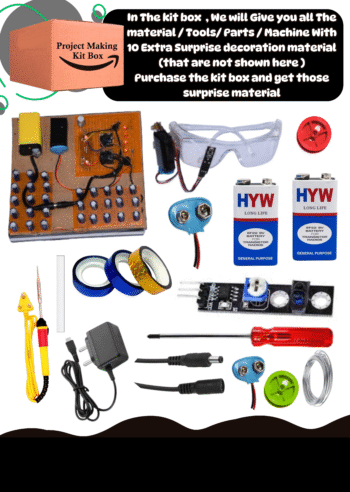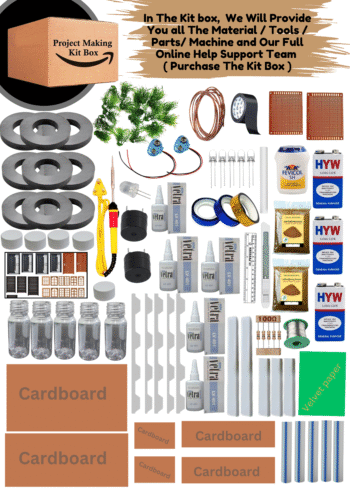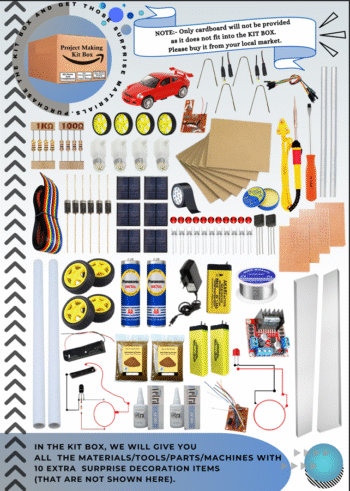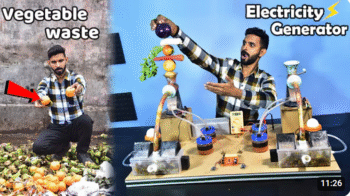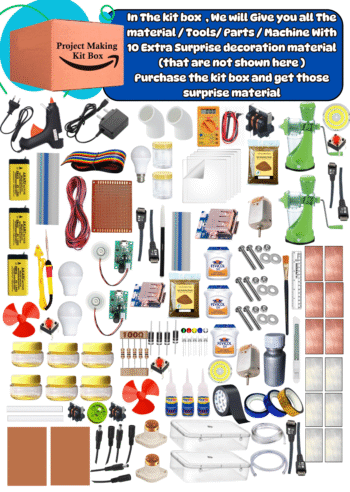-
Anti Sleep Alarm Project For Driver Monitoring System/Inspire Award Project KitRated 0 out of 5
₹2,999.00Original price was: ₹2,999.00.₹2,499.00Current price is: ₹2,499.00.This is Best Project , In This Project We show If driver trying to sleeping when he drive the car or truck , then if he close his eyes or he blink his eyes then eyes blink sensor sense the eyes and generate the signal and alarm system start , and drive can not sleep when he drive the car or truck , This is Eyes Blink and Anti Sleep Alarm System For Drivers .
-
Natural Disaster Management Project For Earthquake Safety Based Magnetic Levitation House ProjectRated 0 out of 5
₹2,499.00Original price was: ₹2,499.00.₹2,000.00Current price is: ₹2,000.00.Components Used: Magnetic Levitation System: Uses permanent magnets or electromagnets to lift the house model, allowing it to float above the base platform. Vibration Isolation Pads: Employs magnetic bearings or shock-absorbing materials to minimize the transfer of vibrations. Steel/Metal Frame or Structure: The house model’s structure, designed to represent the building. Sensors (optional): Seismic sensors to detect and measure vibrations or movements during simulation. Electromagnetic Coils: Used to stabilize and control the movement of the levitating model. Controller Circuit: A microcontroller or feedback system to manage the magnetic forces, ensuring stability during vibrations.
Working Principle: The house model is suspended using magnetic levitation (magnetic repulsion or attraction between magnets). When earthquake-like vibrations are simulated, the magnetic levitation system allows the house to float, reducing direct contact with the base, thus isolating the structure from the ground motion. Vibration isolators (magnetic bearings or dampers) absorb the shock and reduce the amplitude of oscillations that reach the house model. The control system adjusts the magnetic forces in real-time to ensure the house remains stable and centered, even during strong simulated shaking.
Key Features: Magnetic Vibration Isolation: A unique method to reduce seismic forces by suspending the structure and minimizing vibration transfer. Enhanced Stability: The floating effect ensures that the structure remains stable, even under simulated earthquake forces. Energy Absorption: The system absorbs the energy from seismic waves, preventing damage to the model. Minimal Ground Contact: Reduced friction and contact with the base platform ensures that vibrations are isolated, protecting the structure.
Applications: Earthquake-resistant Building Design: Demonstrates how magnetic isolation can be used to create buildings that are less susceptible to earthquake damage. Seismic Simulation: Useful for educational purposes, simulations, and demonstrating how buildings can be designed to resist seismic events. Structural Engineering: Can be applied to research in earthquake-resistant technologies, especially for high-risk regions.
Advantages: No Mechanical Wear: Since the house model is levitating, there is no physical contact with the surface, reducing wear and tear. Real-Time Adjustability: Magnetic levitation systems can adapt to changing conditions, making it suitable for different types of ground motion. Cost-Effective and Scalable: This technology can be scaled to protect larger structures without significant cost increases.
Challenges: Magnetic Field Control: Maintaining precise control over the magnetic forces to ensure stable levitation and avoid instability during strong shaking. Power Consumption: Electromagnetic levitation systems may require significant power, especially for larger models or structures. Size Limitations: The magnetic levitation system might be limited in terms of the size of the structure it can support effectively.
Working Demonstration: During an earthquake simulation, the house will be placed on a vibrating platform (representing the seismic waves). The house floats and remains stable due to the magnetic suspension, while the vibration energy is absorbed by the isolation system, preventing damage to the structure.
Conclusion: This project demonstrates a cutting-edge, innovative approach to earthquake resistance using magnetic vibration isolation. It showcases how magnetic forces can be used to protect buildings and structures from seismic damage, making it a valuable tool for future earthquake-resistant designs. -
Solar Wireless Electric vehical/Inspire Award Project/Solar car/science project kit/Diy Project/Final year electrical projectRated 0 out of 5
₹3,999.00Original price was: ₹3,999.00.₹3,300.00Current price is: ₹3,300.00.1. Introduction: In today’s world, the growing concern for environmental sustainability has led to the development of renewable energy solutions. Electric vehicles (EVs) have gained popularity as an eco-friendly alternative to traditional gasoline-powered cars. However, one of the challenges faced by EV owners is the limited range due to battery constraints. To address this issue, we have developed a groundbreaking project – a solar-powered wireless charging system that can provide emergency charging to electric vehicles using a remote-controlled (RC) robotic car.
-
Waste Vegetable to Electricity Generator Project MakingRated 5.00 out of 5
₹5,999.00Original price was: ₹5,999.00.₹4,499.00Current price is: ₹4,499.00.This project aims to generate electricity from vegetable waste and store it in batteries for mobile phone charging. With rising energy demands and environmental concerns, this eco-friendly solution addresses both sustainable energy generation and organic waste management. Vegetable waste, often discarded from homes, markets, and food industries, is converted into electricity using methods like anaerobic digestion or microbial fuel cells. The stored electricity offers a green and accessible power source, especially beneficial in areas with limited infrastructure, promoting cleaner energy use and improved mobile connectivity. This Is Best Project For Waste Vegetable .


